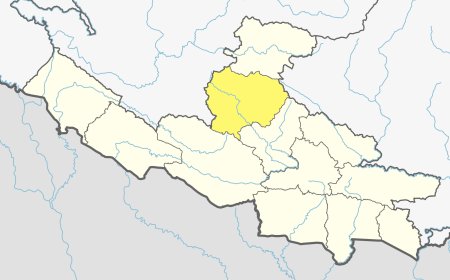Nepal's Alarming Rise in Suicide Cases: Causes and Solutions
Uncover the causes behind Nepal's alarming rise in suicide cases and explore potential solutions. Addressing mental health, socio-economic factors, cultural influences, substance abuse, relationships, and access to means are crucial for prevention.

The case of Monika Thakuri (Moon), a well-known incident of suicide in Nepal, is widely recognized among the country's youth. There are various speculations surrounding the cause of her suicide, with some attributing it to body shaming and online bullying, others mentioning her visa rejection, and some connecting it to her breakup. However, the valid reason remains unknown. I brought up this issue because it is currently a hot topic on social media. Sadly, Nepal has witnessed numerous similar suicide cases, such as that of Yama Budhha, a renowned figure in Nephop music, who appeared to be a content individual. The reasons behind his decision to take his own life remain a mystery. Another distressing incident took place a couple of months ago when an individual committed suicide in public on the streets of Baneshwor. According to his Facebook posts and information from his relatives, he had aspirations to achieve something significant in Nepal, but his business did not flourish as he had hoped, leading to its collapse. Unable to repay his debts, he felt compelled to take such a drastic step. Similarly, just a month ago, a student in Chitwan faced disciplinary action during an exam and was expelled from the examination hall. Tragically, this student later resorted to suicide. Lastly, in December of last year, a woman who was about to get married experienced her fiancé canceling the wedding. Overwhelmed by this heartbreak, she tragically set herself on fire in front of her fiancé's house in Dhumbarahi.
The frequency of suicide cases in Nepal is alarmingly high, and these incidents are often reported in the media. Over the past decade, there has been a significant increase of 72% in suicidal cases. In 2012, an average of 11 deaths by suicide were reported daily, while in 2019, this number rose to 19 deaths per day, resulting in approximately 6,000 suicides in a year. These figures, however, do not account for unreported cases and the prevalence of suicide attempts, which are also widespread. The Epidemiology and Disease Control Division has identified suicide as a major concern in Nepal. The National Mental Health Survey revealed that 6.5% of the population in Nepal contemplates and plans suicide, underscoring the gravity of the issue.
Here are a few of the possible causes of suicide in Nepal:
-
Mental Health Issue:
Undiagnosed mental health conditions, such as depression, anxiety disorders, bipolar disorder, and schizophrenia, can significantly impact individuals and increase the risk of suicide. Effective diagnosis and treatment are crucial to mitigate these consequences. Depression, anxiety disorders, and schizophrenia are severe mental illnesses with varying symptoms. Proper management, early intervention, and promoting mental health awareness are essential steps to prevent suicide and improve well-being.
-
Socio Economic Factor:
Nepal faces pressing issues such as poverty, unemployment, and limited access to education and healthcare. These issues contribute to feelings of hopelessness and despair, as well as increased vulnerability to mental health issues and suicidal tendencies. Addressing these challenges requires comprehensive approaches from governments, NGOs, and international organizations. Initiatives like building schools, improving literacy rates, and providing scholarships can empower individuals and broaden their prospects. Additionally, implementing community-based mental health programs, raising awareness, and providing social safety nets can help reduce the risk factors associated with despair and suicide.
-
Cultural and Societal Factors:
Cultural and societal factors significantly impact suicide rates among Nepali individuals. Stigma, silence, traditional beliefs, gender inequality, socioeconomic challenges, and rural-urban disparities contribute to high rates of suicide. Addressing these factors requires fostering mental health awareness, promoting open dialogue, and destigmatizing mental health issues. Encouraging women, challenging gender norms, and promoting gender equality can help reduce suicide rates and create a supportive environment that prioritizes mental health and encourages help-seeking behavior.
-
Substance Abuse:
Substance abuse, including alcohol and drug addiction, has a complex relationship with suicide, causing a cyclical pattern of despair and hopelessness. It can worsen underlying mental health conditions, impair judgment, and contribute to a downward spiral. Substance abuse disrupts the brain's reward system, impairs decision-making abilities, and alters emotional regulation. The resulting isolation and lack of support networks contribute to feelings of loneliness and despair. Addressing the intertwined issues requires a comprehensive approach, including promoting mental health awareness, educating individuals, providing coping mechanisms, and providing evidence-based treatment programs. Reducing stigma and promoting public health campaigns can help reduce the impact of substance abuse on mental health and mitigate suicide risk.
-
Relationship Problem:
Personal relationships, including marital conflicts, family disputes, and breakups, significantly impact an individual's emotional well-being and can lead to feelings of distress and suicidal ideation. These relationships can cause emotional turmoil, isolation, and emotional instability, resulting in feelings of hopelessness and suicidal ideation. Breakups can be devastating, causing emotional pain and grief. Abuse or violence can exacerbate the risk of suicide. Addressing relationship difficulties requires a multifaceted approach, including providing accessible mental health support, raising awareness about healthy relationship dynamics, promoting strong support networks, and implementing legal protections. By prioritizing mental health support, society can create supportive environments, foster healthy relationship practices, and provide accessible resources to mitigate the risk of suicide.
-
Life Event and Trauma:
Traumatic experiences can significantly impact an individual's mental health, increasing their vulnerability to suicidal ideation and behaviors. Physical or sexual abuse, the loss of a loved one, and significant life changes can leave lasting emotional scars and disrupt one's sense of safety, stability, and well-being. Grief, significant life changes, and a lack of coping mechanisms can lead to suicidal thoughts. Early intervention, trauma-informed care, and support networks are crucial for healing and recovery. Prevention efforts should focus on promoting healthy relationships, preventing abuse, and advocating for policies supporting mental health and trauma-informed care.
-
Access of Means:
Easy access to lethal means, such as firearms and pesticides, significantly increases the likelihood of completed suicides. Firearms are highly lethal, with high fatality rates. Pesticides, particularly in rural areas, can also increase the risk of self-harm. Restricting access to these methods, along with mental health support, early intervention, and a supportive environment, can significantly reduce suicide rates. Implementing policies, regulations, and community-based interventions can help prevent suicides and save lives.
In Nepal, a significant disparity exists in suicide rates between genders. Approximately 56% of suicides are committed by males, while 33% are committed by females. Additionally, 7% of adolescent girls and 4% of adolescent boys have also taken their own lives. This data highlights a higher prevalence of suicide among males compared to females. The root causes behind these trends can often be traced back to financial and family issues. Many individuals, burdened by overwhelming debt, face a difficult choice: either fleeing their responsibilities or resorting to suicide. This situation particularly affects individuals who seek employment in Gulf countries, where an astonishing 12% of Nepali migrant workers who pass away in countries like Qatar and Malaysia have died by suicide.
Career and financial problems are the predominant factors contributing to suicide among men, whereas women face different challenges. In the age group of 15-49 years, suicide and deliberate self-harm rank as the leading cause of death for women. Alongside health issues and accidents, suicide and self-harm occupy the top positions. Nepal Police data reveals a sharp increase in suicide cases among minors over the past five years. The number rose from 255 in 2017 to 709 in 2022. Recently, two boys and two girls tragically took their own lives by jumping from a school building, leaving behind notes mentioning their mistakes. In my personal life, I have also witnessed the devastating impact of suicide. A friend's younger brother, who was studying in the 8th grade, committed suicide over two years ago, and the reason behind his tragic decision remains unknown.
Nepal is divided into seven provinces, with Sudurpachim and Karnali being the provinces with a lower Human Development Index (HDI), indicating their relatively less developed status. Interestingly, these provinces also have fewer reported suicide cases compared to others. On the other hand, Bagmati and Koshi provinces, which have higher HDI compared to the rest, experience a higher incidence of suicide. However, the dynamics changed during the COVID-19 pandemic. During the lockdown period, Bagmati and Koshi provinces witnessed a decrease in suicide cases, while Sudurpachim and Karnali provinces observed an increase in suicide cases.
If we continue to feel shame and discomfort when discussing mental health, the prevalence of suicidal cases will inevitably continue to rise unabated. We must break this silence and initiate open conversations about mental health while actively promoting awareness. Unfortunately, the availability of human resources dedicated to addressing mental health concerns remains distressingly low. Currently, there are only around 200 psychiatrists in Nepal, a number that is significantly inadequate given the scale of the problem. To effectively combat the rising tide of suicide cases, it is crucial to bolster the mental health sector by increasing the number of professionals equipped to provide support and treatment. By taking proactive steps to address mental health and expanding the workforce of mental health professionals, we can strive to bring an end to the tragic and preventable loss of life caused by suicide.
What's Your Reaction?





































































































